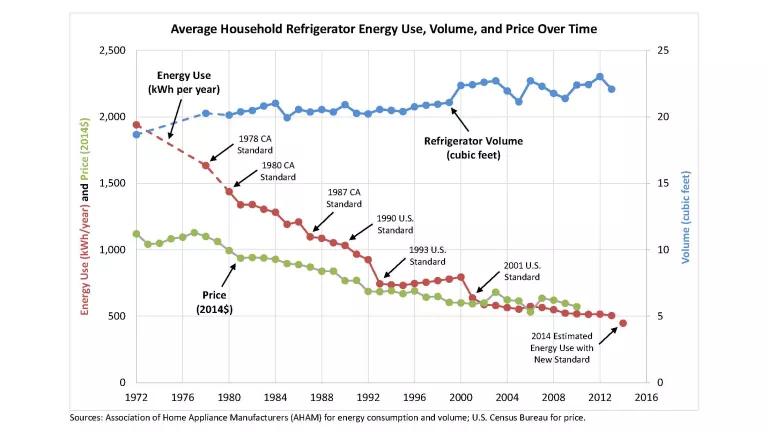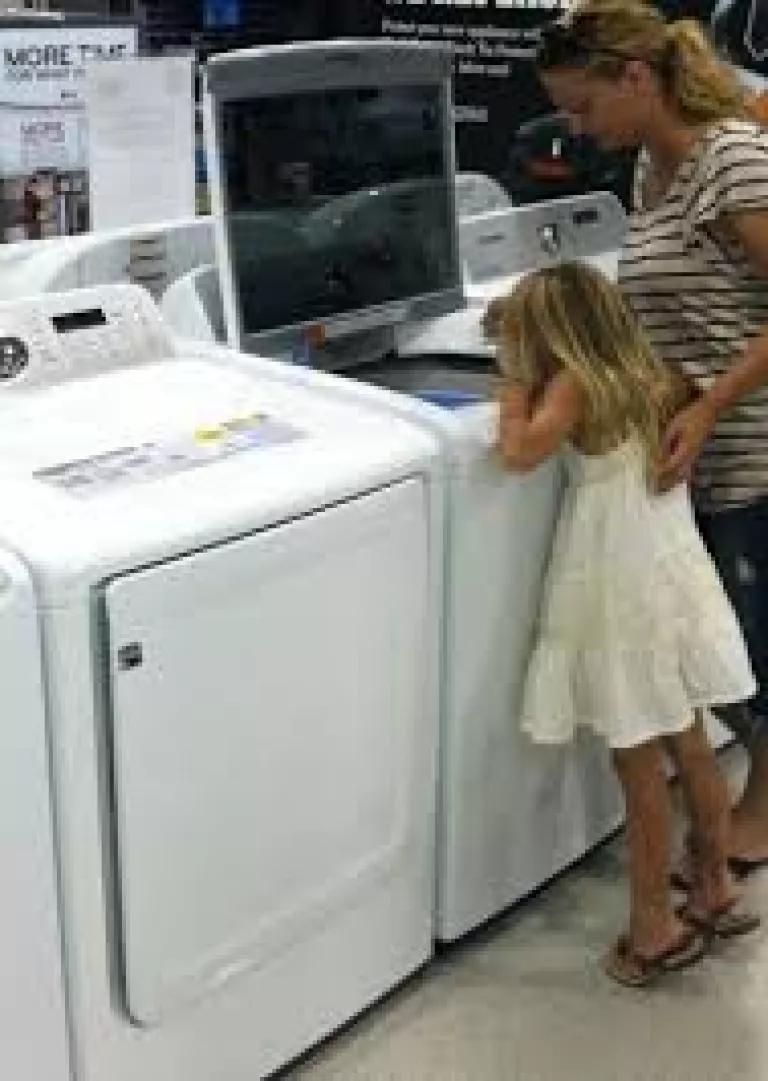
Part 2 in a series. Read part 1 here.
A common critique of energy efficiency standards for appliances and equipment is that they increase the purchase price of the product. While it may seem relatively logical to expect a better, more energy-efficient product to cost more, often the cost is less than expected and with some standards, the purchase prices have actually decreased. As I noted in my last post on this topic, the affordability of efficiency standards is incredibly important, particularly for consumers with limited incomes.
On average, low-income households spend 7.2 percent of their income on utility bills, more than triple what is spent by higher-income households. Efficiency standards are particularly important for renters and families living in multifamily housing—groups which are statistically more likely to be low-income. Renters don’t often have control over the types of appliances and equipment found in their homes, and landlords (who don’t generally pay the utility bills) don’t have much incentive to invest in anything but the cheapest equipment they can purchase. DOE analyzes the impact of standards specifically on low-income consumers, seniors, and residents of multifamily housing. Analysis of the impact on these groups—as well as on the general population—is a crucial factor to how the U.S Department of Energy (DOE) decides if a standard level is appropriate.
Let’s dig a bit deeper into the standards for refrigerators and clothes washers to more fully understand DOE’s analysis and the impact of standards on prices and customers over time. Both products have been subject to regular energy efficiency standards updates, yet prices over the last 20 years have declined at a rate of around 2 percent per year.
Refrigerators
When the first efficiency standards were considered in the early 1970s, an average refrigerator used about 2,000 kilowatt-hours of electricity each year. Since standards took effect and have been subsequently updated multiple times, refrigerators today use around 500 kilowatt-hours each year—a 75 percent decrease in energy use! What’s more, over this same time period, the volume of refrigerators has increased while the price of a new fridge has steadily decreased, as the chart below from the Appliance Standards Awareness Project shows. How has this happened? Manufacturer innovation, for one. When manufacturers redesign products to meet new efficiency standards, they often take that opportunity look for ways to streamline manufacturing processes, reduce labor costs, or use different materials. Updated standards can serve as a catalyst for these types of changes, which in turn help to reduce consumer costs for products that meet the new standards.
A refrigerator is a necessity of modern life—nearly all homes in the United States have at least one refrigerator. However, low-income households are often renters or live in multifamily housing, so they may have little control over the types of refrigerators in their homes. While the landlord may prefer to buy the cheapest (and often least-efficient) model, standards ensure that as equipment is replaced, all consumers benefit from energy savings, as well.
Clothes Washers
A two-tiered energy efficiency standard for clothes washers took effect in 2004 and 2007. DOE estimated that once both standards were in place, the manufacturer price would increase by $253. But data from the Census Bureau shows that, between 2003 and 2008, the average manufacturer price of a clothes washer went down by $43. That means that a consumer who purchased a clothes washer meeting the updated standard not only saved money on utility bills thanks to higher equipment efficiency, they paid less for the product that meets then higher standard than they would have for a less-efficient washer.
For the most recent update to the clothes washer standard, which took effect in 2015, DOE analyzed the impact of the standard specifically on low-income and senior-only households, and households living in multifamily housing. This analysis took into account the difference in energy use, washer use, and energy cost for these populations as compared to an “average” consumer, and used data specific to this household type. The standards levels that were ultimately chosen by DOE were found to have either no impact or a net benefit—meaning that even if the washer might cost a little more initially, a customer’s energy bill savings would offset that cost—for 98 percent of low-income or senior-only households.

Now, that doesn’t mean that these households would experience an economic benefit from purchasing any new clothes washer on the market. Clothes washers, refrigerators, and many other household goods have wide ranges of prices, due mostly to features that have little to do with energy consumption. However, the presence of an efficiency standard means that there is a mechanism to protect consumers and help ensure that the appliances and equipment they purchase aren’t wasting energy and money. DOE’s analysis shows that the presence of minimum efficiency standards is beneficial for the overwhelming majority of low-income and senior households, even taking into account that these households may do fewer loads of laundry or have a lower tolerance for cost increases.
Savings generated from refrigerator and clothes washer standards are just two examples of the positive impact of the national energy efficiency standards program. These benefits accrue to all customers, regardless of income.



